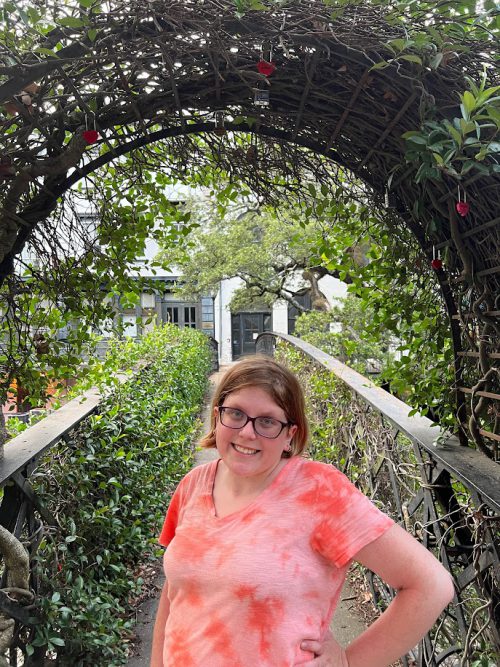Over spring break, I had the opportunity to travel with a group of Virginia Wesleyan students and professors to England.
We spent most of our time in Oxford studying Christian authors who studied and taught at Oxford University, including C.S. Lewis and J.R.R. Tolkien most commonly known for their fiction novels: “The Chronicles of Narnia” and “Lord of the Rings”, respectively.
In addition to our studies of literature and history in Oxford, we had the opportunity to travel to other parts of England, including the beautiful capital of London and Stratford-upon-Avon, home of William Shakespeare.
While out on our adventures, we had the opportunity to see two theatre productions. As a member of multiple productions while at VWU and a lifelong Broadway enthusiast, these were of particular interest to me.
The first show we saw was Shakespeare’s “Much Ado About Nothing” at the Royal Shakespeare Theatre. Immediately upon entering, I was amazed by the atmosphere of the theater. Every usher, ticket checker and security guard was ecstatic to see us and offered a warm welcome.
There was a feeling of relaxation and comfort once in the theater. There was no sense of urgency, and yet everything was still organized and orderly.
The theater itself was very different from the ones we see in the US. Instead of filling the space with seats horizontally, the Royal Shakespeare Theatre was stacked vertically.
For those with a fear of heights, this may have proved to be a bad decision. Nevertheless, it made for a unique viewing experience. The seats were also curved in a semicircle so that every seat was seeing a completely different view.
“Much Ado About Nothing” was a spectacular work of art. This modern take on a historic comedy portrayed two juxtaposed love stories through extravagant costumes and hip hop musical numbers. It received glowing reviews from our class, even from my classmates who are not typically into theater and generated great conversation about the play during our high tea following the performance.
The second show we saw was “Six” at The Vaudeville Theatre on the West End in London.
Growing up in Philly, I used to see Broadway shows every few months in New York City prior to the pandemic. Thus, I had a certain level of expectation for the West End, what I have always viewed as “Europe’s Broadway.”
These expectations, however, were far surpassed. Although the merchandise and show quality were to the same calibur of Broadway, the overall atmosphere was different. It felt more special, more personal.
Much like the Royal Shakespeare Theatre, The Vaudeville stretched more up than it did out. The difference was that this theater was decked out in grand drapery and shiny golden decor, with luxury box seats that give the feel of an 18th century opera house. The “playbills,” although not free, were of a much higher quality. All the ushers were overwhelmingly kind.
And as for the show, there are no words that could do it justice. From the tight harmonies and masterful choreography to the charming costumes and flawless stage presence, it was nothing short of a masterpiece.
Each woman of the six in the cast welcomed every single audience member with their interactions and humor. It was an environment I never wanted to leave, and a show I would see over and over.
The theater has always been a place where people of any background can come to feel welcomed, loved and entertained. This is something British theaters certainly got right. I hope to take a page from this book in my own theater experiences as I reflect on these unforgettable experiences and look forward to many more international adventures.
By: Lindsay White
lgwhite@vwu.edu


